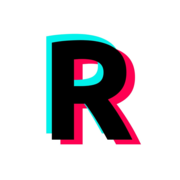
Overview
ReRender AI is a cutting-edge tool that leverages artificial intelligence to transform architectural designs into stunning, photorealistic renders. It supports a wide range of design styles and integrates seamlessly with popular design software like AutoCAD, Blender, and SketchUp. This tool is ideal for architects and designers looking to enhance their presentations and client engagements with high-quality visualizations.
Key Features
- Photorealistic AI Renders: Generates high-quality, realistic images quickly.
- Wide Design Coverage: Supports diverse architectural styles from modern homes to complex theaters.
- Intuitive User Interface: Easy to use, suitable for professionals of all technical levels.
- Adjustable Default Settings: Customizable settings for lighting, colors, and materials.
- Integrated Learning Resources: Access to blogs and company policies for continuous learning.
- Magic Wand Special Features: Enhances creativity and detail in projects.
How It Works
ReRender AI operates by allowing users to upload their design projects from software like AutoCAD, Blender, or SketchUp. The AI then processes these designs to produce photorealistic renders. Users can adjust settings for lighting, colors, and materials to achieve the desired look. The tool also offers a magic wand feature for special rendering effects.
How to Use
- Upload Your Design: Import your project from AutoCAD, Blender, or SketchUp.
- Adjust Settings: Customize lighting, colors, and materials as needed.
- Render: Use the AI to generate a photorealistic render.
- Review and Edit: Make any necessary adjustments using the intuitive interface.
- Download and Share: Save your render and share it with clients or team members.
Use Cases
- Architectural Presentations: Enhance client presentations with high-quality visualizations.
- Design Iterations: Quickly visualize different design options and make informed decisions.
- Marketing Materials: Create stunning images for marketing and promotional purposes.
- Client Engagement: Improve client understanding and approval with realistic renders.
Advantages and Limitations
Advantages
- Speed: Quickly generates high-quality renders.
- Ease of Use: Intuitive interface suitable for all skill levels.
- Versatility: Supports a wide range of design styles and projects.
- Collaboration: Enables real-time collaboration and cloud-based storage.
Limitations
- Resource Intensive: Requires high-end hardware for optimal performance.
- Limited Offline Capabilities: Relies heavily on internet connectivity.
- Steep Learning Curve: Some advanced features may be complex for new users.
Comparison with Similar Tools
| Feature/Tool | ReRender AI | Fabrie AI | Mnml.AI | LookX AI | PromeAI | Midjourney |
|---|---|---|---|---|---|---|
| Photorealistic Renders | Yes | Yes | Yes | Yes | Yes | Yes |
| Integration with Design Software | Yes | Yes | No | Yes | No | No |
| User Interface | Intuitive | Moderate | Simple | Complex | Simple | Complex |
| Customizable Settings | Yes | Yes | No | Yes | No | Yes |
| Collaboration Features | Yes | No | No | Yes | No | Yes |
Pricing
ReRender AI offers a subscription model starting at $45 per month. A free trial is available for new users to explore the tool's features.
Conclusion
ReRender AI stands out as a powerful tool for architects and designers, offering quick, high-quality photorealistic renders. Its ease of use, versatility, and integration with popular design software make it an invaluable asset for enhancing design presentations and client engagements.




